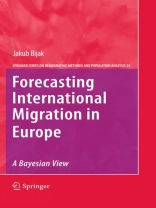International migration is becoming an increasingly important element of contemporary demographic dynamics and yet, due to its high volatility, it remains the most unpredictable element of population change. In Europe, population forecasting is especially difficult because good-quality data on migration are lacking. There is a clear need for reliable methods of predicting migration since population forecasts are indispensable for rational decision making in many areas, including labour markets, social security or spatial planning and organisation. In addressing these issues, this book adopts a Bayesian statistical perspective, which allows for a formal incorporation of expert judgement, while describing uncertainty in a coherent and explicit manner. No prior knowledge of Bayesian statistics is assumed. The outcomes are discussed from the point of view of forecast users (decision makers), with the aim to show the relevance and usefulness of the presented methods in practical applications.
Daftar Isi
List of tables and figures.- Part I. Introduction.- Part II. Explaining and forecasting migration.- Part III. Examples of Bayesian migration predictions.- Part IV. Perspectives of forecast makers and users.- Part V. Conclusion.- Acknowledgements.- References.- Subject Index .- Index of Names.- Annex A. Data sources and the preparatory work.- Annex B. Win BUGS code used in the presented Bayesian forecasts.- Annex C. Bayesian forecasts of selected migration flows in Europe.












